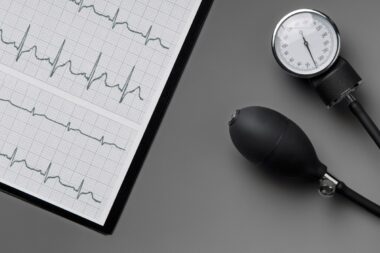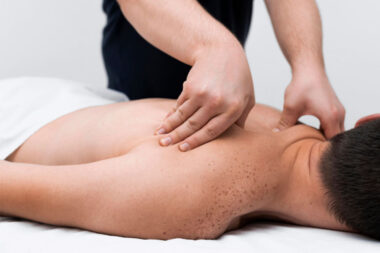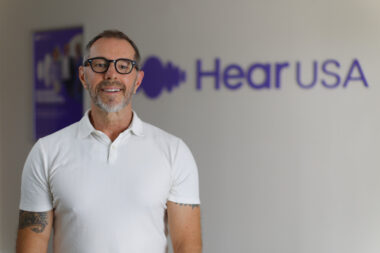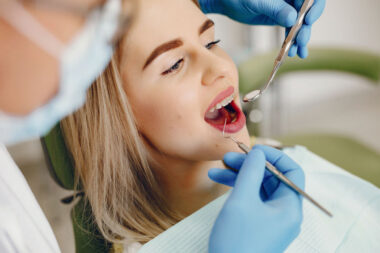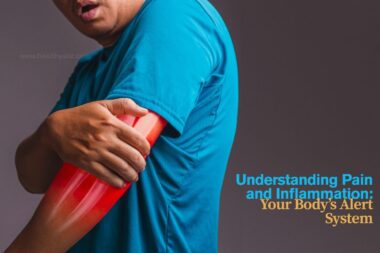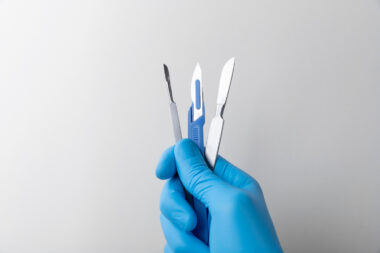An old patient who had moved out of state recently wrote complaining about his new dentist. She had asked what he felt were intrusive questions about his snoring and she suspected he might have obstructive sleep apnea.
The dentist wanted to refer him for further testing. He felt like this was beyond her area of expertise. Wasn’t she supposed to focus exclusively on his teeth and gums?
I told him he was wrong. The dentist is an ideal healthcare provider to screen for possible sleep apnea. And many other conditions. Patients often visit their dentist more frequently than their primary care physician, or any other physician.
In an oral examination, the dentist can screen for a variety of diseases or conditions that manifest in the mouth. The dentist is not making the final diagnosis, but alerting the patient to a potential health issue that requires further evaluation by the appropriate medical provider.
Some dental offices routinely take blood pressure. It’s usually done by a dental assistant in sixty seconds or less. Hypertension, or high blood pressure, can lead to strokes, heart attacks, and even erectile dysfunction. But there are often no warning signs to the patient that he may suffer from high blood pressure.
An abnormally high reading may be a one-off or something that requires further study by the patient’s physician. This simple diagnostic test, performed at the dentist, maybe a lifesaver for the patient.
Some other conditions include:
Oral cancer
Every hour, 24 hours a day, 365 days a year, someone dies of oral or oropharyngeal cancer. Accounting for about 3 percent of all diagnosed cancers, in 2022, almost 54,000 Americans were diagnosed with oral or oropharyngeal cancer.
One common cause of oral cancer is smoking. The dentist can easily spot negative soft tissue changes that result from smoking and introduce the idea of smoking cessation programs to the patient.
While the incidence of oral cancer has been relatively stable in recent years, the incidence of cancers linked to the human papillomavirus (HPV) has increased. HPV cancers usually occur at the base of the tongue or back of the throat.
Tell your dentist if you’ve experienced a persistent sore throat or any voice changes.
GERD (Gastroesophageal reflux disease)
GERD occurs when highly acidic stomach contents leak back into the esophagus. Patients may be unaware they have GERD, or acid reflux, but chronic GERD can damage the teeth, esophagus, pharynx, or respiratory tract.
Sometimes, as in the case of bulimia, induced vomiting, and the resultant GERD is intentional and repeated, producing a distinct pattern of wear in the teeth.
The dentist calling attention to this may not be enough for the patient to cease the activity, but it’s a start.
Anxiety
During the COVID-19 pandemic and lockdown, stress was at an all-time high. Dentists noticed an increase in cracked teeth, and jaw and muscle pain. Anxiety can be manifested in many ways, such as hair loss, irritability, or the grinding or clenching of teeth.
The dentist can intervene directly by making a protective mouth guard for these stressful episodes. He can also direct the patient to calming techniques or psychotherapy.
Occasionally patients don’t recognize or admit their anxiety. They may, instead, complain about a toothache, only to discover that the source of the pain is not from their teeth.
The dentist can spot changes in the dentition, tongue, joints, or jaw muscles that indicate stress being played out in the mouth.
Diabetes
Diabetes that occurs in adulthood, termed type 2 diabetes, is on the rise. The reasons are complex, but the increasing trend is linked to obesity, poor diet, and a sedentary lifestyle.
Diabetics have a higher risk of a host of health problems, including heart attack, stroke, kidney failure, nerve damage, and loss of vision.
It’s understood that the relationship between gum disease and diabetes is reciprocal, meaning that diabetics are more likely to have uncontrolled gum disease or periodontitis. Conversely, gum disease makes sugar control more difficult, thereby exacerbating diabetes.
If a patient’s gum disease worsens suddenly, type 2 diabetes may play a role. It’s critical for the physician, dentist, patient, and dietician to work together to manage both these conditions.
These are but a few examples of how valuable a health partner your dentist can be.
Here’s what you can do:
✅ See the dentist regularly for an exam. If you’re accustomed to only seeing the hygienist, insist on a thorough exam with the dentist.
✅ If the exam seems too cursory, find a dentist who is more proactive.
✅ Be open to questions that may appear to you to be outside the scope of dentistry. Remember that your dentist has nothing to gain by taking the time to inquire about possible diabetes as he will neither be diagnosing, nor treating this condition.
✅ Understand that the mouth does not exist in isolation. It is connected to the rest of the body and reflects your overall health.
Dental appointments are the perfect opportunity for people to improve their overall health and well-being. Your dentist does – and should – play an important role in helping you achieve this goal.
Image by Freepik

Teresa Yang, DDS, has practiced dentistry in the Los Angeles area for more than thirty years. She started and developed two practices from scratch, which is unique in today’s insurance-driven world. She has taught clinical dentistry and patient management at UCLA School of Dentistry, has written extensively on dental topics, and is the editor of WestViews, a publication of the Western Los Angeles Dental Society. Dr. Yang’s philosophy has always been to put the patient’s interest first: “A person is more than a mouth and a set of teeth.” She is the author of Nothing But the Tooth/An Insider’s Guide to Dental Health (Rowman & Littlefield, August 23, 2023). Learn more at teresayangdds.com.



